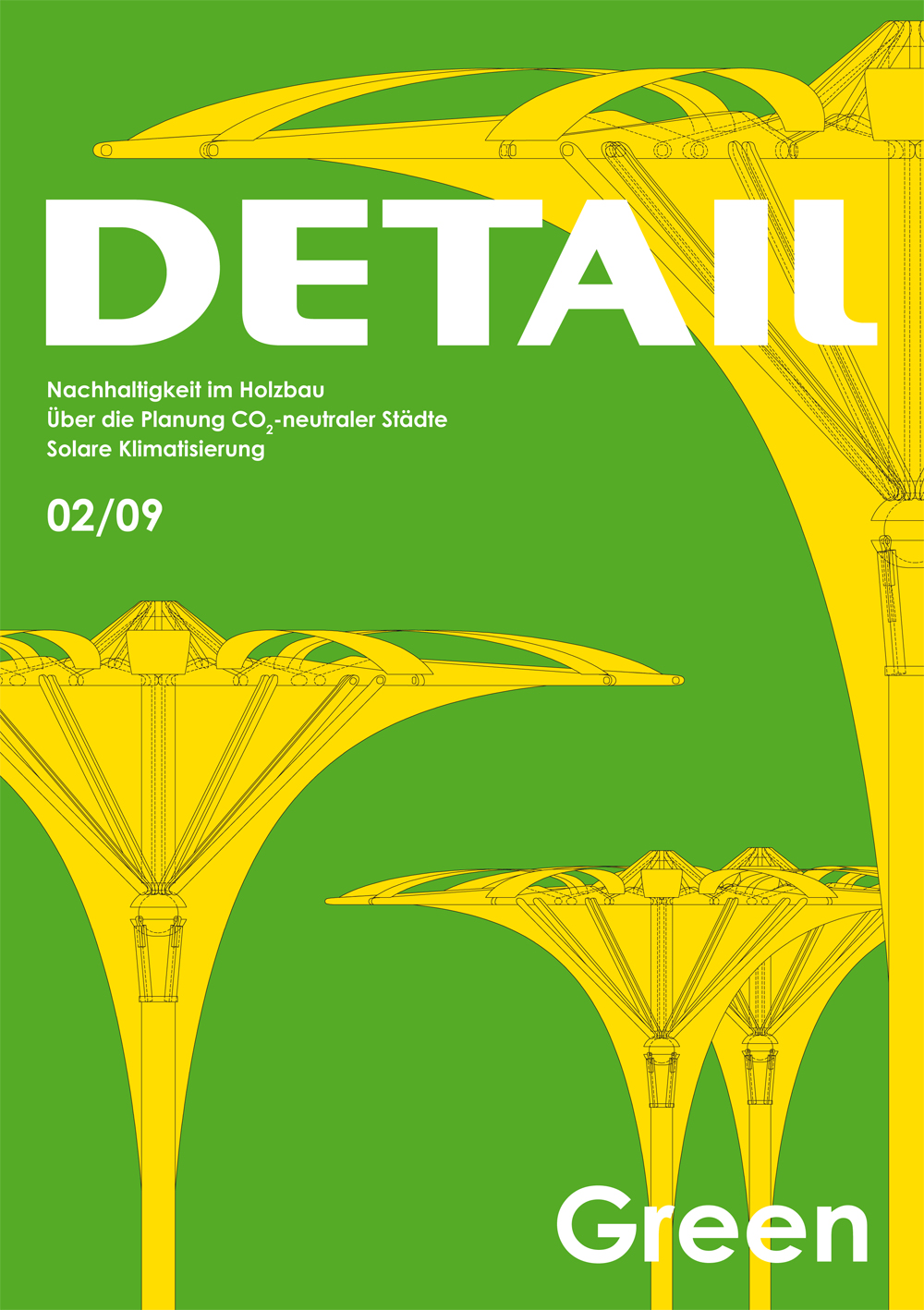Green 2/2009

Sustainability is high on the agenda of public debate, but the variety of interpretations of what this term actually means is bemusing. They range from idiosyncratic definitions to “greenwashing”, or giving a veneer of sustainability to buildings, products and services that are definitely not environmentally sound.
Certification systems like LEED, BREEAM and DGNB are aimed at bringing more transparency to the business of rating sustainability. They claim to cover and assess all the aspects of sustainability that are relevant to buildings. But precisely this is what some architects are sceptical about: Once these schemes are introduced, will all those other qualities of a building be neglected – the ones that can’t be expressed in figures? Or do such labels simply broaden the way people look at architecture? In future issues of DETAIL Green, we will be looking more closely at these issues. Certainly, the certification criteria do leave scope for a wide variety of architectural solutions, as the projects featured here show. Among them is Germany’s most sustainable office building, rated according to the DGNB system, and the first building fulfilling the requirements for Swiss Minergie-P-Eco certification.
Other questions explored this month by contributors to DETAIL Green include: How sustainable are constructions made of timber or timber-based products? What impact is climate change having on building design? And: How do you go about planning a zero-carbon city in the desert of Abu Dhabi? Masdar City, an urban development supplied exclusively with renewable energy, inspired the cover design for this issue. It shows the shading over the city’s central plaza, in a complex to be built in the coming years to designs by LAVA Architects. Masdar City, too, has had accusations of “greenwashing” levelled at it. Too expensive and exclusive to qualify as sustainable, say the critics. The supporters respond by pointing out that, as a test lab for sustainable technology, the city will spur on advances from which we will all later benefit. Find out more about the different types of technology behind this venture and how they are integrated into the energy concept for the city in the “Background” section.
As well as DETAIL Green the magazine, we also offer our readers regular up-to-date information on sustainable architecture on our website. Just go to www.detail.de/english and click on the “GREEN” tab.
Certification systems like LEED, BREEAM and DGNB are aimed at bringing more transparency to the business of rating sustainability. They claim to cover and assess all the aspects of sustainability that are relevant to buildings. But precisely this is what some architects are sceptical about: Once these schemes are introduced, will all those other qualities of a building be neglected – the ones that can’t be expressed in figures? Or do such labels simply broaden the way people look at architecture? In future issues of DETAIL Green, we will be looking more closely at these issues. Certainly, the certification criteria do leave scope for a wide variety of architectural solutions, as the projects featured here show. Among them is Germany’s most sustainable office building, rated according to the DGNB system, and the first building fulfilling the requirements for Swiss Minergie-P-Eco certification.
Other questions explored this month by contributors to DETAIL Green include: How sustainable are constructions made of timber or timber-based products? What impact is climate change having on building design? And: How do you go about planning a zero-carbon city in the desert of Abu Dhabi? Masdar City, an urban development supplied exclusively with renewable energy, inspired the cover design for this issue. It shows the shading over the city’s central plaza, in a complex to be built in the coming years to designs by LAVA Architects. Masdar City, too, has had accusations of “greenwashing” levelled at it. Too expensive and exclusive to qualify as sustainable, say the critics. The supporters respond by pointing out that, as a test lab for sustainable technology, the city will spur on advances from which we will all later benefit. Find out more about the different types of technology behind this venture and how they are integrated into the energy concept for the city in the “Background” section.
As well as DETAIL Green the magazine, we also offer our readers regular up-to-date information on sustainable architecture on our website. Just go to www.detail.de/english and click on the “GREEN” tab.
